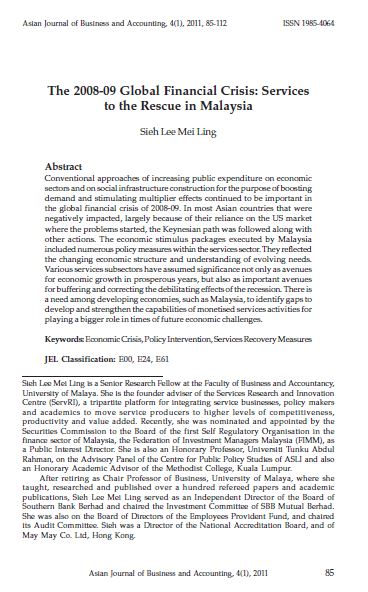The 2008-09 Global Financial Crisis: Services to the Rescue in Malaysia
Main Article Content
Abstract
Conventional approaches of increasing public expenditure on economic
sectors and on social infrastructure construction for the purpose of boosting
demand and stimulating multiplier effects continued to be important in
the global financial crisis of 2008-09. In most Asian countries that were
negatively impacted, largely because of their reliance on the US market
where the problems started, the Keynesian path was followed along with
other actions. The economic stimulus packages executed by Malaysia
included numerous policy measures within the services sector. They reflected
the changing economic structure and understanding of evolving needs.
Various services subsectors have assumed significance not only as avenues
for economic growth in prosperous years, but also as important avenues
for buffering and correcting the debilitating effects of the recession. There is
a need among developing economies, such as Malaysia, to identify gaps to
develop and strengthen the capabilities of monetised services activities for
playing a bigger role in times of future economic challenges.
Keywords: Economic Crisis, Policy Intervention, Services Recovery Measures
